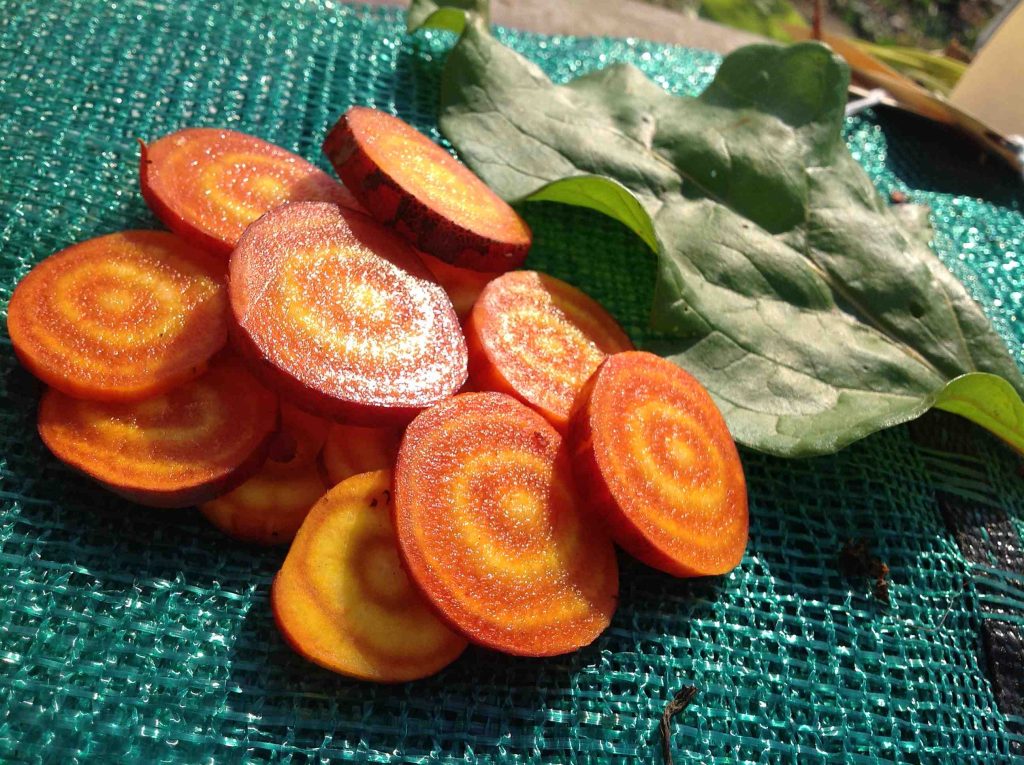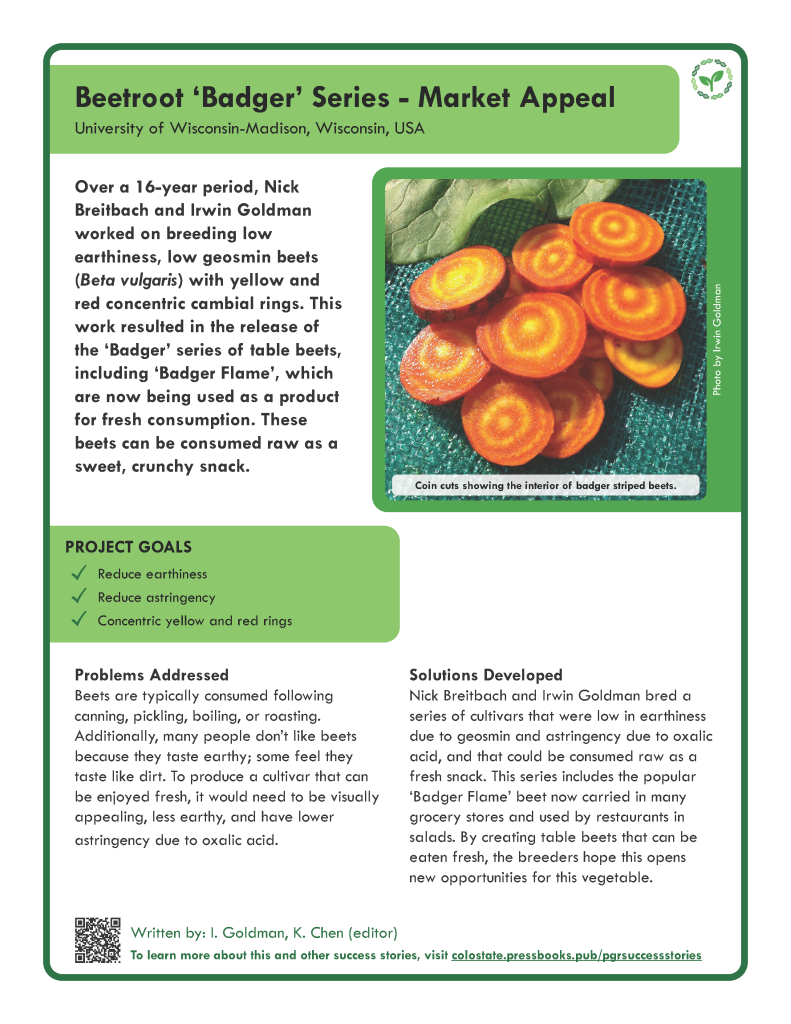Vegetables and Pulses
Beetroot Badger Series – Market Appeal
NOT YOUR GRANDMOTHER’S BEET: LOW GEOSMIN AND LOW OXALATE TABLE BEETS FOR FRESH CONSUMPTION
Irwin Goldman
Department of Horticulture, University of Wisconsin-Madison, 1575 Linden Drive, Madison, Wisconsin 53706.
Corresponding author: ilgoldma@wisc.edu
OUTLINE
1. SUMMARY

Over a 16-year period, Nick Breitbach and Irwin Goldman worked on breeding low earthiness, low geosmin beets (Beta vulgaris) with yellow and red concentric cambial rings. This work resulted in the release of the Badger series of table beets, which are now being used as a product for fresh consumption. These beets can be consumed raw as a sweet, crunchy snack.
The goal was to make a table beet cultivar that could be eaten fresh. This cultivar would need reduced levels of earthiness due to geosmin and astringency due to oxalic acid. The breeders were additionally interested in making a cultivar with concentric yellow and red rings.
Download a printable fact sheet by clicking the image below.
2. PROBLEMS ADDRESSED
Typically this crop is consumed following canning, pickling, boiling, or roasting. Additionally, many people don’t like beets because they taste earthy; some feel they taste like dirt. To produce a cultivar that can be enjoyed fresh, it would need to be visually appealing, less earthy, and have lower astringency due to oxalic acid.
3. SOLUTIONS DEVELOPED

Nick Breitbach and Irwin Goldman bred a series of cultivars that were low in earthiness due to geosmin and astringency due to oxalic acid, and that could be consumed raw as a fresh snack. This series includes the popular ‘Badger Flame’ beet now carried in many grocery stores and used by restaurants in salads. By creating table beets that can be eaten fresh, the breeders hope this opens new opportunities for this vegetable.
Collaborators involved in developing solution:
- Irwin Goldman and Nick Breitbach, University of Wisconsin-Madison, Madison, Wisconsin, USA
4. GERMPLASM
The germplasm used to develop the Badger series of beets included earlier cultivars, breeding lines, and landraces; more specifically from cylindrical European table beet cultivars, heirloom open pollinated cultivars from the U.S., and inbred lines developed in the Wisconsin table breeding program. Germplasm from the National Plant Germplasm System has been essential to the University of Wisconsin-Madison’s breeding and research programs for the past 70 years.
5. ADDITIONAL RESOURCES
An article about ‘Badger Flame’: https://madison.com/news/local/education/university/uw-madison-professor-creates-beet-that-actually-tastes-good/article_ee9521d9-9dd1-507d-b3b0-b76056513074.html
6. CHAPTER INFORMATION
Citation: Goldman I. 2023. Beetroot Badger Series – Market Appeal. In: Volk GM, Chen K, Byrne P (Eds.) Plant Genetic Resources: Success Stories. Fort Collins, Colorado: Colorado State University. Date accessed. Available from https://colostate.pressbooks.pub/pgrsuccessstories/chapter/beetroot-badger-series-market-appeal/
Content originally submitted: September 12, 2022
Date of publication: February 2023
USDA is an equal opportunity provider, employer, and lender. Mention of trade names or commercial products in this article is solely for the purpose of providing specific information and does not imply recommendation or endorsement by the U.S. Department of Agriculture.


